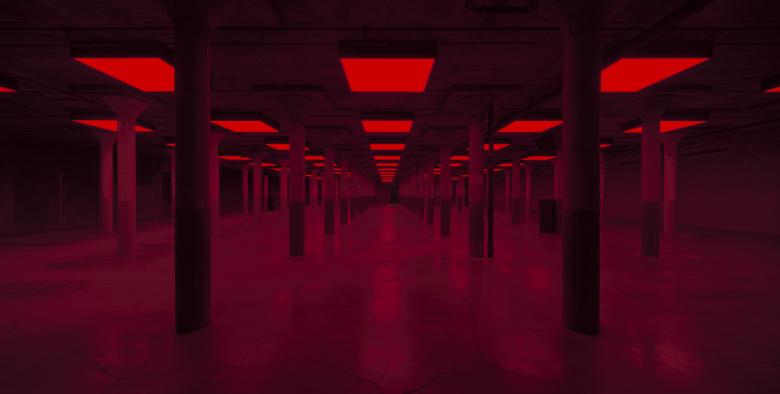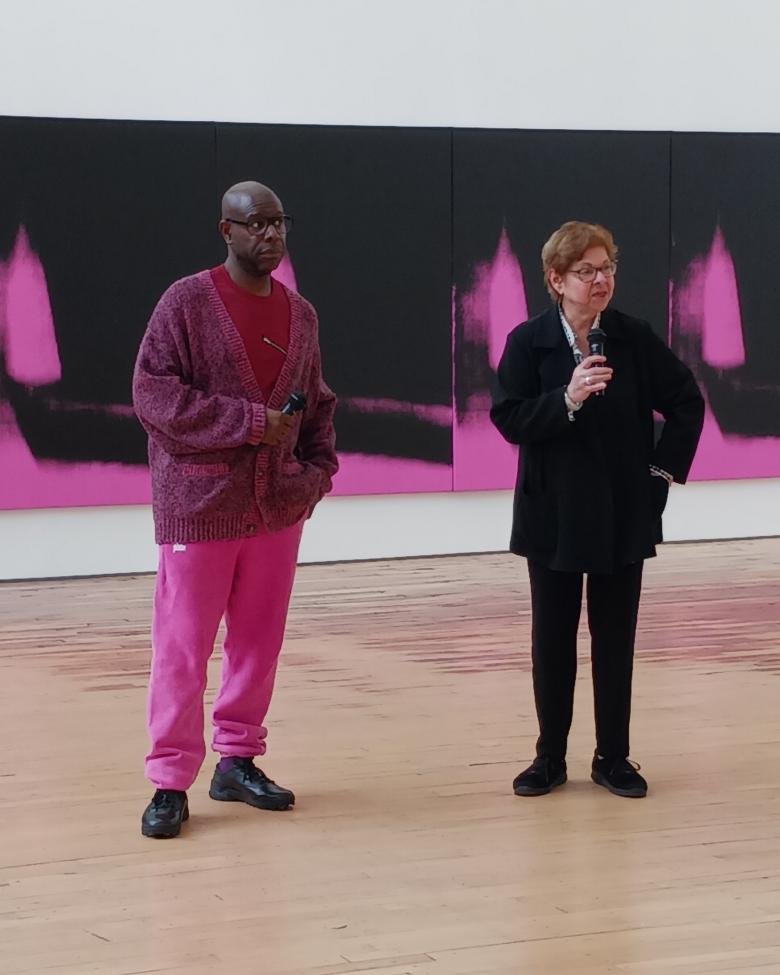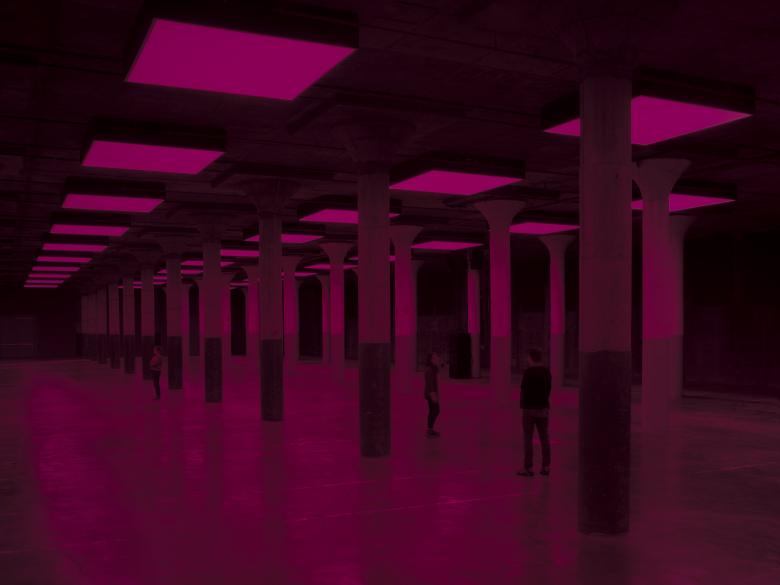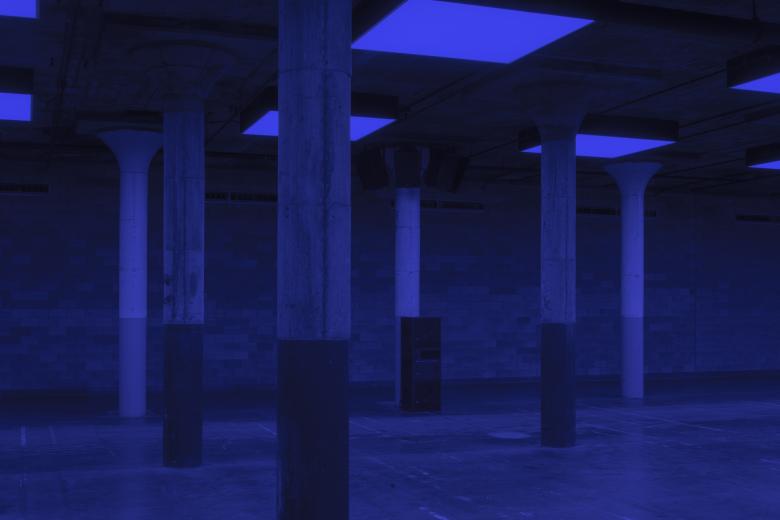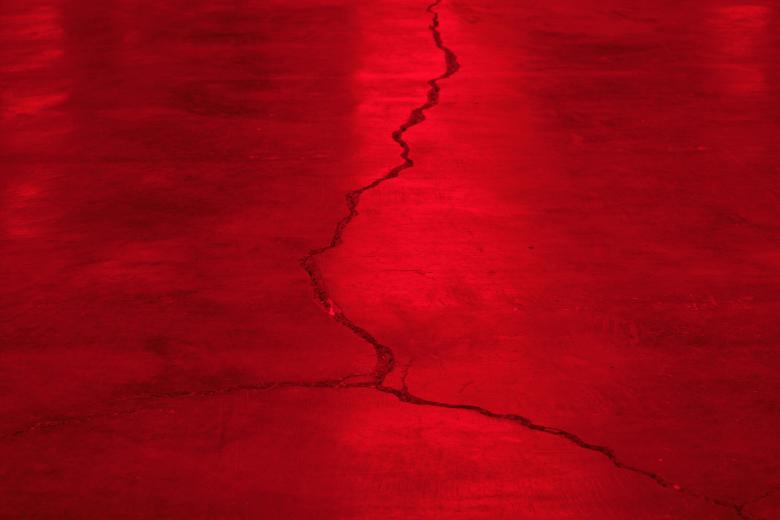Film director Steve McQueen's Bass is an immersive light-and-sound installation in the lower-level gallery of Dia Beacon in New York's Hudson River Valley. World-Architects visited ahead of the artwork's opening on May 12.
In his brief, one might even say terse, remarks to a gathering of press a couple of days ahead of Bass's public opening on May 12, 2024, Steve McQueen described the making of the immersive artwork as “a beautiful moment.” That “moment” was in reality three hours and nine minutes long: a recording of five musicians, each playing a titular bass, improvising to the changing colors of the 60 lightboxes on the ceiling of the subterranean space.
Although the piece is highly abstract, consisting of just light, color, sound, and space, the work references journeys from Africa to the Americas. McQueen further said Bass was “all about limbo,” in regards to the the months-long voyages of enslaved Africans across the Atlantic. While visitors don't need to know this background to be moved by the work, the roll call of Afro-diasporic musicians — Marcus Miller, Meshell Ndegeocello, Aston Barrett Jr., Mamadou Kouyaté, Laura-Simone Martin — embeds the historical references within the artwork.
Dia Beacon is housed in a former Nabisco printing plant in Beacon, a 90-minute train ride from Manhattan. The windowless 35,000-square-foot (3,250-m2) space that is home to Bass, with mushroom-capped concrete columns and faint white lines painted on the concrete floor, looks like it must have served as a parking garage or some other mundane use in its first incarnation. Mundanity has given way to profundity in Bass, as slowly changing colors of light and droning bass envelop visitors, making them hyperaware of themselves and those around them.
On our visit, after McQueen spoke and then left us, we descended a flight of stairs and were confronted by a view similar to the photo at top: a horizontal space defined by the 60 ceiling-mounted lightboxes between the 78 concrete columns. The perimeter bays were free of light, so the edges of the large space were dark, gauzy. We moved, slowly at first but even more slowly after some moments, as the initial grid of green light imperceptibly gave way to yellow, before changing to orange, red, purple, blue, and back to green over what must have been at least 45 minutes.
As I observed the piece and the people from the dark margins, I noticed how others gravitated to the columns, some of them sitting down at the bases or on the benches at the perimeter walls. Even the faintest footsteps were loud in the space, and given how Bass manages to demand reverence, in hindsight I'm not surprised people spent most of the time sitting, absorbing the experience.
Visitors are instructed not to take photos. Cameraphones would not do justice to the experience anyways, but their omission heightens visitors' perception of the light and sound and pushes them to turn inwards. My thoughts considered McQueen's diasporic references: I saw the space as akin to an Egyptian hypostyle hall; the lightboxes on the ceiling were an artificial sky, its color changing during the many sunrises and sunsets on a transatlantic voyage; the paint on the columns created a horizontal datum akin to the ocean's surface. Perhaps these are overly tenuous or sanguine connections between art and reference, but they are no less “correct” than any other given the abstract nature of the installation.
While the stacks of speakers were a practical stand-in for the musicians who recorded in the space, I noticed how the bass ensemble ratcheted up the tension during the reds, creating a crescendo of sorts to a piece that is otherwise endless, without a beginning or end. The influence of the space and McQueen's color installation on the musicians therefore was palpable. But did the piece influence me, did it linger?
As I walked the Riggio Galleries at Dia Beacon after spending nearly an hour with Bass, as I took in the permanent Michael Heizer, Robert Irwin, and Richard Serra works I first saw two decades ago, I eventually noticed how I hadn't been thinking about Bass. The experience was all-encompassing when I was in it, but afterwards it was fleeting. At least, for me it was fleeting. For others, who knows? All the more reason to visit Dia Beacon and experience it for yourself.
